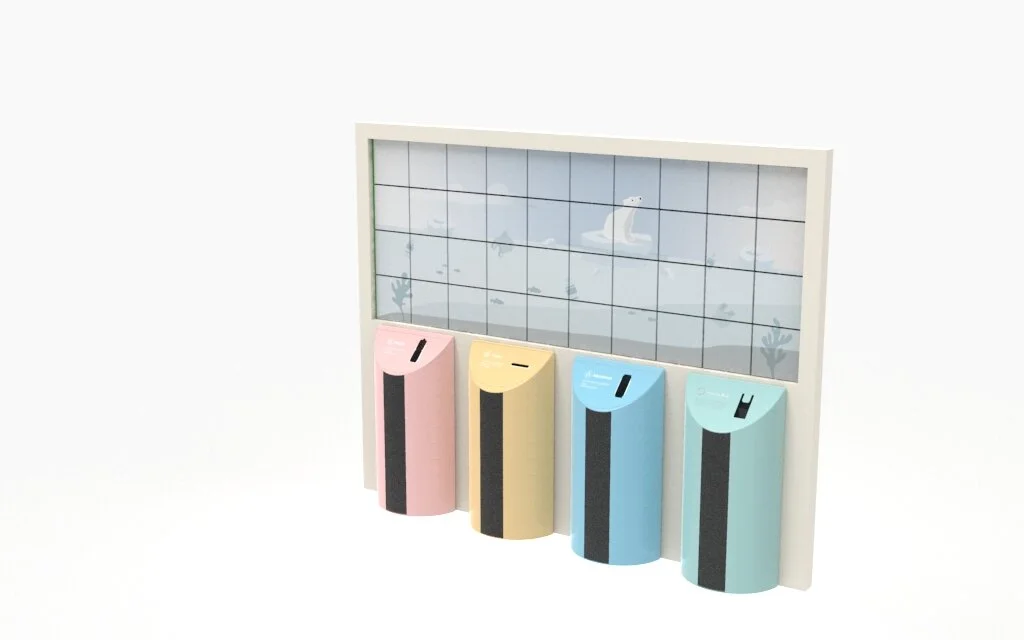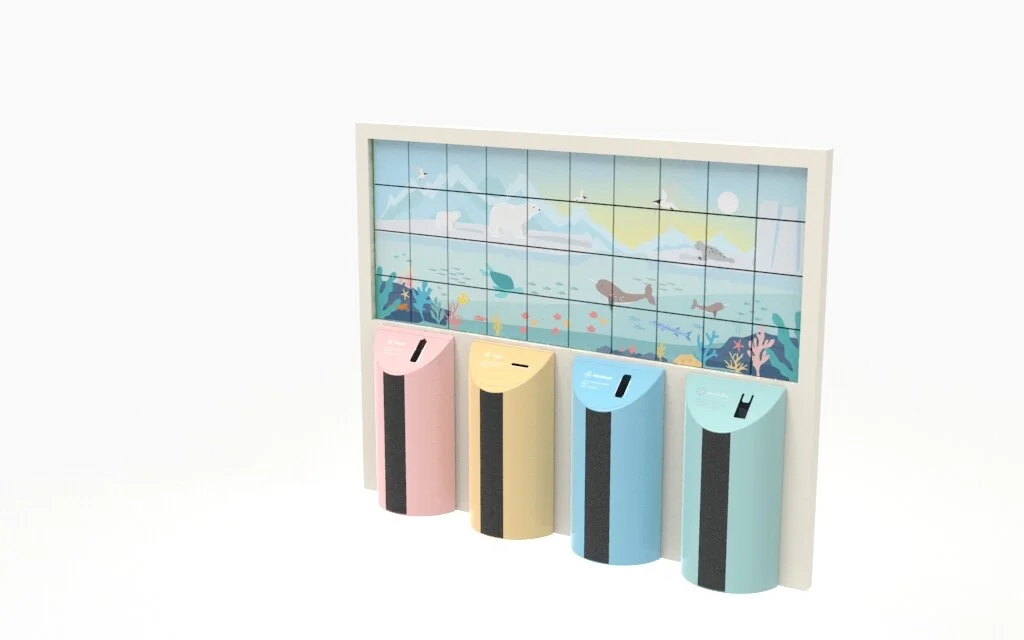ECO Blackboard.
An interactive wall installation that encourages recycling through a collaborative and immersive story-reading experience
Duration
3 months,
Dec 2019 – March 2020
Project Type
Sustainability
Interactive Installation
Teaching Aid Design
Storytelling
My Role
Research and analysis
Strategy and concept development
User Journey
Visual Design
Team
This is a solo project
Background
China has one of the largest – and fastest-growing – carbon footprints of any country on earth (WWF, 2019). Over the next few decades, today’s Chinese schoolchildren - around 200 million - will be making vital decisions about what to consume and how to live. It is therefore crucial for China to implement effective ESD (education for sustainable development) in K-12 schools.
The Challenge
How might we promote behavior changes among the young generation in China through quality education for sustainable development (ESD)?
The Solution
“Eco-Blackboard” is a story-based interactive installation designed for K-12 classrooms. Students are encouraged to participate in a joint-recycling activity by turning a gloomy story wall of nature into a lively one, understanding recycling as a rewarding and collective responsibility.
Developing a Collaborative Culture in ESD
It is everyone’s job to save the plant. I believe that building up a sustainable future involves collaborative efforts. Traditional sustainable education focuses more on individual behavior training, treating students as separate individuals rather than a group. In this project, students work together and develop a sense of collective responsibility in saving the earth.
Reconnecting to Nature through Touching Stories
Kids today are already alienated from nature due to rapid urbanization. It is therefore schools’ job to help students rebuild a co-living mindset with nature. I believe one effective way to do that is through immersive and touching storytelling.
How I got there?
01 - Exploration
What are the main challenges in implementing ESD in China?
To understand the status-quo of ESD in China and to understand the difficulties facing the effective implementation of ESD in K-12 schools, I conducted secondary research to help generate initial insights for future primary design investigation.
Academic Journal
Case studies
News resources
Insights
I was then able to identify three major issues of ESD in China today:
Interview
I conducted 15 one-on-one-in-depth video interviews with primary school students, their parents and teachers on their experience with environmental education in China. Interviews helped me better understand the problem space and identify design opportunities.
02 - Insights and opportunity area
After reviewing secondary research and interview results, I synthesized the insights together and listed opportunity areas for the design solution.
Synthesized Insights
The present environmental education in China places more emphasis on knowledge acquisition than actual practice by individuals. While this approach helps to build awareness, it does not necessarily result in behavior changes. Lectures on recycling, for example, cannot encourage students to continue practicing after class.
03 - Concept Development
Given the opportunities identified, I brainstormed several design directions. These ideas gradually involve into the final concept - an interactive wall that features animal-centered storytelling, and engages different stakeholders - be it students, teachers, or parents.
Area of Focus - Why Recycling?
For the purpose of this design, I decided to focus on waste management and recycling. Because by 2025, China hopes to implement a nationwide urban waste sorting system. Recycling education will be of top priority in China’s first eco-education program.
04 - Delivery
“Eco-Blackboard” is an interactive wall installation that encourages students to practice recycling as a group. Designed as a teaching aid, it motivates students to continue practicing recycling-behaviors after class. The story is inviting: by properly recycling their trash, students could “turn” a gloomy picture of nature into a lively one, learning the positive impacts of their actions.
Side A
Side B
Story Design
The lonely polar bear and polluted ocean
Side A features a sad story in which a polar bear is alone standing on a tiny iceberg. Around him, the ocean is polluted by plastic trash and marine animals have disappeared. The story aims to talk about the negative consequences of global warming and plastic waste on bio-diversity.
The restored beautiful and happy North Pole
Side B features a happy and positive story in which polar animals live happily together. Icebergs and marine animal diversity are restored without global warming and pollution.
Learning Journey
Before & After
Comparing to traditional ESD in China, ECO-Blackboard features a more active, student-centered, collaborative, and sustained learning environment.
05 - Reflection
As a designer who is passionate about people and the environment, I believe that the issue of sustainability, given its intricacy and scale, should be addressed globally and locally. This project provided a joyful opportunity to examine the ESD in China, both through analyzing its domestic situations and the global standards.
Through interaction with students, parents, and teachers, I got a better sense of the challenges in implementing ESD in China, and was able to develop a China-specific plan of innovative teaching aid system. Overall, it is a rewarding experience to design around fostering eco-awareness and behaviors, and have a small but meaningful footprint in the education, earth, and people.














